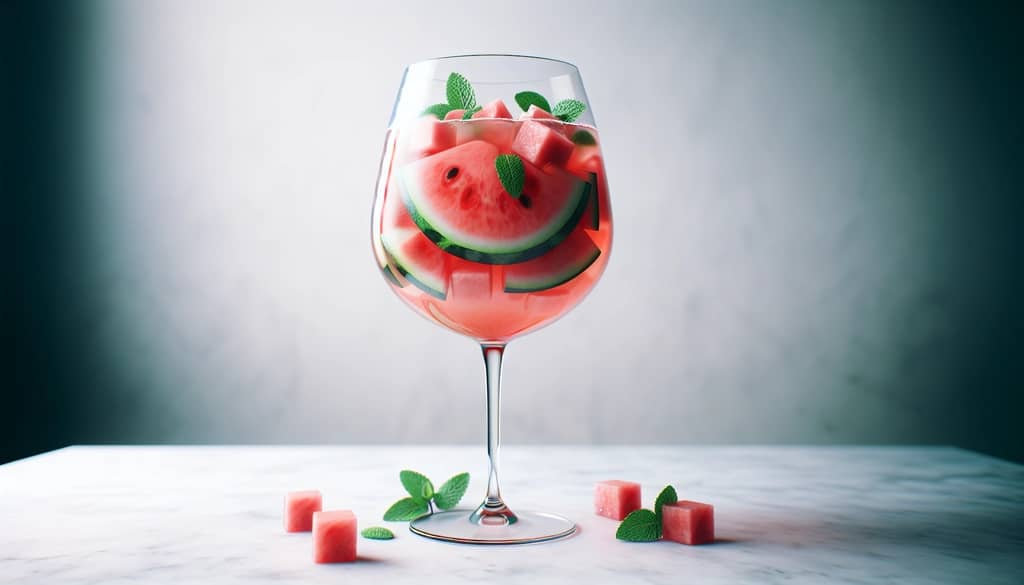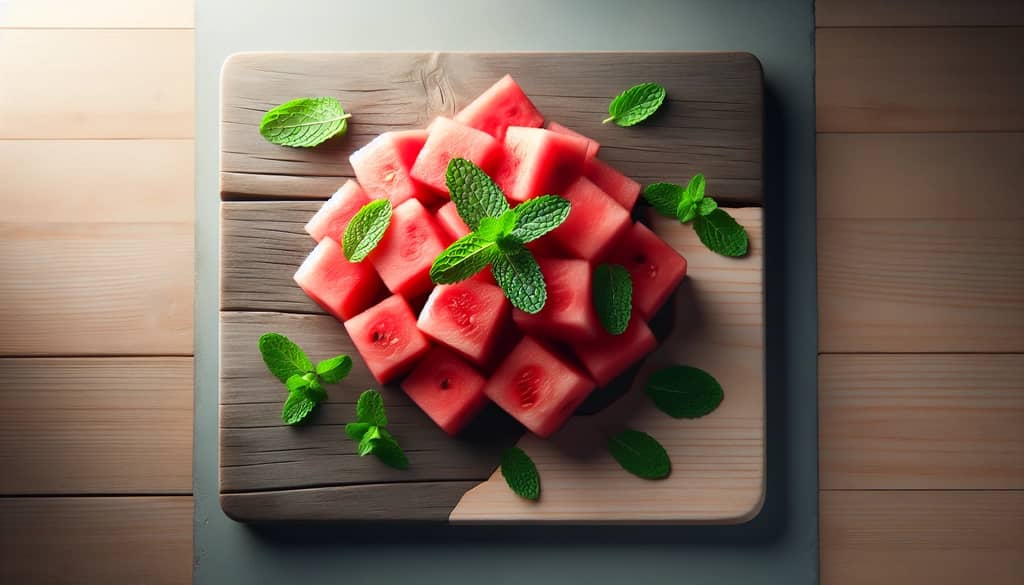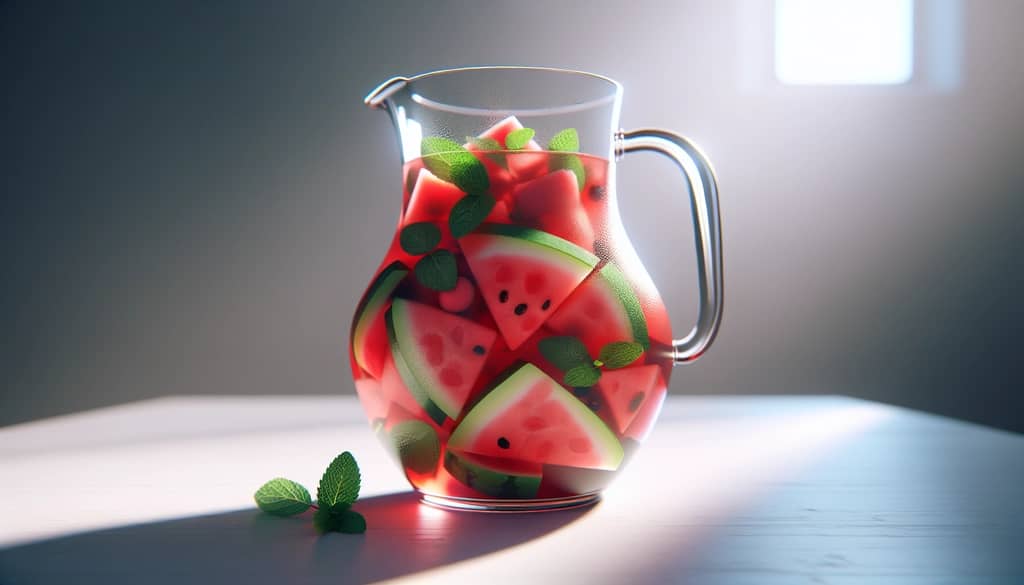Updated on: 6/3/2025
Watermelon-Infused Sangria: Ingredients, Flavors, and Science

Watermelon-infused sangria delivers a refreshing twist on the classic Spanish punch, transforming familiar flavors with a burst of summer fruit. But what exactly goes into this cocktail, how do these choices shape its taste and aroma, and what’s the best way to achieve clean, vibrant results every time? Understanding the ingredients and their unique properties is key to mastering a balanced, aromatic watermelon sangria.
Core Ingredients of Watermelon-Infused Sangria
The backbone of any sangria is a thoughtful mix of wine, fruit, and a spirituous or aromatic boost. For watermelon-infused versions, ingredient selection is especially important—watermelon’s lightness can be overshadowed, or lost in a muddle. Here’s what typically goes into a vibrant watermelon sangria:
- 300 ml fresh watermelon cubes (seedless, ripe)
- 600 ml dry white wine (Sauvignon Blanc, Verdejo, or Pinot Grigio)
- 60 ml orange liqueur (such as Cointreau or Triple Sec)
- 60 ml fresh lime juice
- 45 ml simple syrup (adjust to sweetness of watermelon and wine)
- 120 ml soda water (added just before serving for effervescence)
- Additional fruit: 60 ml sliced strawberries, 30 ml diced cucumber (optional for complexity)
- Fresh mint leaves (for aroma)
Each ingredient is selected for its structural, aromatic, or textural impact. Watermelon provides dilute, juicy sweetness and a subtle aroma; white wine forms an acidic, fruity backbone; orange liqueur supplies weight and citrus oil complexity; lime adds brightness; and soda water leavens the finish.
How Each Ingredient Influences Flavor and Aroma
- Watermelon: Primary source of juiciness and light melon aroma. Contains volatile esters (like ethyl butyrate) that lend a clean, refreshing note, but dilutes easily—proper infusion time is key for pronounced flavor.
- Dry white wine: Raises acidity and delivers background fruit esters. Sharp, unoaked styles (Sauvignon Blanc, Pinot Grigio) reinforce watermelon brightness instead of overwhelming with oak or excess body.
- Orange liqueur: Adds sweetness, texture, and essential oils (limonene, citral) that bridge wine and melon. Makes the profile more aromatic and complex.
- Fresh lime juice: Sharpens the fruit character and increases perceived freshness. Lime acidity also balances the tendency of watermelon to taste flat if unaccompanied.
- Simple syrup: Smooths out tartness and enhances the natural sweetness. It also helps dissolve volatile flavors into the wine, leading to a more homogeneous blend.
- Soda water: Lifts aromatics and texture—carbonation not only refreshes but carries light fruit esters toward the nose, increasing aroma perception.
- Strawberries & cucumber: Supplemental. Strawberries boost jammy notes; cucumber brightens with green, vegetal undertones—a subtle counterpart to watermelon.
- Mint: Cooling, menthol aroma rises above the fruit, accentuating freshness and finishing character.
Technical Tips for Infusing and Balancing
Sangria hinges on extracting maximum flavor without excessive dilution or muddiness. Watermelon’s water content (over 90%) means its taste can disappear unless handled carefully. Here are some high-impact techniques to maximize flavor, clarity, and aroma:
- Use very ripe, high-flavor watermelon. Cut into small cubes, removing any seeds.
- Macerate watermelon cubes in the simple syrup and orange liqueur for 20–30 minutes to extract maximum aroma before adding the wine.
- Avoid muddling or crushing—this clouds the liquid and can introduce fibrous notes.
- Chill all ingredients thoroughly; a cold infusion retains fresh aroma and keeps dilution controlled.
- Add soda water just before serving to preserve fizz and amplify watermelon esters.
- Taste and adjust sweetness or acidity—every batch of watermelon (and wine) varies.

Watermelon-Infused Sangria Recipe (ml Units)
- 300 ml ripe watermelon cubes
- 600 ml dry white wine
- 60 ml orange liqueur
- 60 ml fresh lime juice
- 45 ml simple syrup (or to taste)
- 60 ml sliced strawberries (optional)
- 30 ml diced cucumber (optional)
- Fresh mint for garnish
- 120 ml soda water (add last)
- In a large pitcher, combine watermelon cubes, simple syrup, and orange liqueur. Stir and let sit for 20–30 minutes to allow infusion.
- Add white wine, lime juice, optional strawberries and cucumber, and mix gently. Cover and chill in the refrigerator for 1–2 hours for flavors to marry.
- Strain or ladle into glasses with fruit, top each glass with 20–30 ml soda water, and garnish with fresh mint.

Final Notes on Balance and Service
The best watermelon-infused sangria is bright, not oversweet, and delivers lifted aromatics with every sip. Ingredient quality and infusion time determine whether you achieve a nuanced cocktail or a bland fruit punch. Always taste before serving and tweak the balance—you can’t dial back dilution or acidity after the fact, but you can always add a splash more syrup, citrus, or soda if needed. Serve cold, in generous wine glasses, and pair with simple, fresh fare for peak effect.